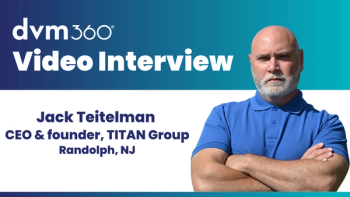
Code of conduct: Labeling veterinary clients with secret shorthand
Is it unprofessional to warn technicians about difficult people and pets using a system thats hidden from the client? One team member says yes.
Shutterstock.com
Dr. Reed Thompson has chosen to follow in the footsteps of his father, Reed Thompson Sr., who started an urban veterinary practice 49 years ago. This inner-city clinic has its challenges, but Dr. Thompson, like his father, refuses to abandon the community and flee to the suburbs.
The practice presents somewhat unique challenges. Dr. Thompson works with one other doctor and a staff of eight technicians and three receptionists. Despite his best efforts, accounts receivables are high and his profit margin is less than ideal. Dr. Thompson compensates for these shortcomings by using his technicians in the most efficient manner possible.
Many veterinarians will tell you that their techs are the lifeblood of their practice-in Dr. Thompson's clinic, this is an understatement. Technicians take client histories, record exam room notes, administer all medications and perform all diagnostic tests.
Dr. Thompson has always thought the medical side of his practice was the easy part; the compliance component was the real challenge. Many of his clients don't pay their bills and can be tough to deal with, plus they often have aggressive pets. In order to render the best care for his patients he has to be in tune with his clients' mindset. And the best way he's found to do this is to use a shorthand protocol with his techs. This allows him to tailor his treatment protocol for maximum compliance.
‘A memorable dog'
Today a diabetic patient is in the clinic. The dog is aggressive when handled, and the client is confrontationally defensive about the dog's aggression. In addition, this client is known to have limited funds and is able to afford only minimum care. Dr. Thompson must do his best to help this pet, encourage client compliance and still get paid for his services.
In the exam room the technicians make notes on the doctor's observations. Dr. Thompson dictates the pet's vitals while mentioning that he's a memorable dog. He tells the technician to add a circle dot to the record and the number 47. While talking to the client, Dr. Thompson mentions that he uses medical code to assist his staff with notes to the record.
The reality is that Dr. Thompson is telling his technicians that the dog is aggressive (circle dot), the client might be difficult to deal with (number 47), and there's a history of reluctance to provide payment ( “a memorable dog”). Everyone's informational needs are met, no feelings have been hurt, and the pet and client are handled in the best possible way.
A new technician has some issues with this technique. She approaches Dr. Thompson to express her views. She understands the codes and their role in informing the staff, but she thinks the practice is unprofessional. She believes the client is the pet advocate and part of the healthcare team. Excluding the pet owner in this way is easier in the moment but ultimately dishonest. The veterinarian's professionalism must be above board if clients are to place their faith in his medical recommendations.
Dr. Thompson is taken aback. He believes that his clients, his patients and the local community all benefit from both his style and his commitment. In his view, if he's not efficient in the way he handles communication challenges such as this, his practice won't survive.
He tells his new technician that he's doing nothing illegal, that he does not agree that his actions are unprofessional, and that she has a decision to make. The doctor and his technician agree to part ways. Dr. Thompson continues to practice with the aid of his private informational code, secure in his mind that it's ultimately in the best interests of his patients and practice.
Do you agree with Dr. Thompson's methods?
Rosenberg's response
No one will argue with the idea that honesty and transparency are the foundations of ethical veterinary practice. However, when you move from the ideal world to the real world, black and white are not the only professional options. None of Dr. Thompson's veiled medical-record comments negatively affect his patients. If he didn't use these methods, would clients be insulted? Might technicians be injured?
Yes, taking the time to talk through these issues tactfully with the pet owner might accomplish the same thing, albeit less efficiently. But the bottom line is that veterinary practice is composed of myriad well-intentioned clinicians. Professionalism has many different acceptable faces, and Dr. Thompson's is one of them.
Dr. Marc Rosenberg is director of the Voorhees Veterinary Center in Voorhees, New Jersey. In his private time, he enjoys playing basketball and swing dancing with his wife. Although many of his scenarios in “The Dilemma” are based on real-life events, the veterinary practices, doctors and employees described are fictional.
Newsletter
From exam room tips to practice management insights, get trusted veterinary news delivered straight to your inbox—subscribe to dvm360.




